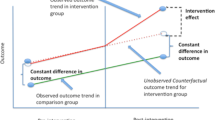Abstract
Objective: To describe dental care utilization and access problems in Connecticut's Medicaid managed care program, using quantitative and qualitative research methods. Methods: Using Medicaid managed care enrollment and encounter data from Connecticut, utilization rates for preventive care and treatment services are determined for 87,181 children who were continuously enrolled in Medicaid managed care for 1 year in 1996–97. Sociodemographic and enrollment factors associated with utilization are identified using bivariate and multivariate methods. Dental providers and practices where children received services are described. Qualitative methods are used to characterize problems experienced by families seeking dental care during the study period. Results: Only 30.5% of children continuously enrolled in Medicaid managed care for 1 year received any preventive dental services; 17.8% received any treatment services. Children who received preventive care were eight times more likely to have received treatment services. Utilization was higher among (a) younger children, (b) children who lived in Hartford and in other counties served by public dental clinics, and (c) children enrolled in health plans that did not subcontract for administration of dental services. Just 5% of providers, primarily those in public dental clinics, performed 50% of the services. Families whose children needed care encountered significant administrative and logistical problems when trying to find willing providers and obtain appointments. Conclusions: Access to dental care is a problem for children in Connecticut's Medicaid managed care program. Several features of managed care have negatively affected access. Public dental clinics served many children across the state and contributed to higher utilization of preventive care and treatment services among children living in Hartford.
Similar content being viewed by others
REFERENCES
Edelstein BL, Douglas CW. Dispelling the myth that 50 percent of U.S. schoolchildren have never had a cavity. Public Health Rep 1995;110:522–30.
Kaste LM, Selwitz RH, Oldakowski RJ, Brunelle JA, Winn DM, Brown LJ. Coronal caries in the primary and permanent dentition of children and adolescents 1-17 years of age: United States, 1988-1991. J Dent Res 1996;75(Spec Iss):631–41.
Vargas C, Crall JJ, Schneider D. Pediatric dental caries: Sociodemographic distribution, NHANES III, 1988-1994. J Am Dent Assoc 1998;129.
Health Care Financing Administration. State Medicaid manual section 5110.
Health Care Financing Administration. State Medicaid manual section 5122.C.
Health Care Financing Administration. State Medicaid manual section 5124.B.b.
U.S. Department of Health and Human Services Office of Inspector General. Children's dental services under Medicaid: Access and utilization. San Francisco, CA: DHHS, 1996.
www.hcfa.gov/medicaid/epsdthm.htmau.
Hall CH, Lee MA, Solomon J. The Children's Health Council: A community foundation/state government partnership. Health Affairs 1999;18(4):167–71.
Children's Health Council. Ambulatory care utilizationamong children enrolled in HUSKY Part A. Hartford, CT: CHC, 2000.
Glaser BG, Strauss AL. The discovery of grounded theory: Strategies for qualitative research. New York: Aldine de Gruyter, 1967.
Nainar SMH, Crall JJ. Caries experience in inner-city preschoolers at the time of their initial dental visit. Am Soc Dent Child J 1997;64:421–4.
Connecticut Department of Social Services. Annual reports to HCFA on EPSDT participation, FFY 1991-1998 (Form HCFA-416). Hartford, CT: DSS, 1998.
Wolfe SH. State of Connecticut Department of Public Health licensure information, as of March 1997.
State of Connecticut Department of Social Services. Estimated dental participation in Connecticut Medicaid: Report to the Medicaid Managed Care Council, 8 May 1998. Hartford, CT: DSS, 1998.
Ferrucci K. Information from Connecticut State Dental Association. November 25, 1998.
Connecticut Department of Public Health. Safety net providers in Connecticut: A report to the Public Health Subcommittee of the Medicaid Managed Care Council, Connecticut State Legislature. Hartford, CT: DPH, January 1998.
Fitchner LO, Dimmock, DE. Personal communication, April 29, 1998.
U.S. General Accounting Office. Oral health: Factors contributing to low use of dental services by low-income populations (GAO/HEHS-00-149). Washington, DC: U.S. General Accounting Office, 2000.
Perkins J, Short J. State initiatives to improve access to dental care. Washington, DC: National Health Law Program, 2000.
Author information
Authors and Affiliations
Corresponding author
Rights and permissions
About this article
Cite this article
Lee, M.A., Horan, S.A. Children's Access to Dental Care in Connecticut's Medicaid Managed Care Program. Matern Child Health J 5, 43–51 (2001). https://doi.org/10.1023/A:1011397818512
Issue Date:
DOI: https://doi.org/10.1023/A:1011397818512




